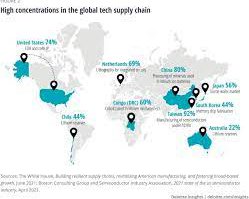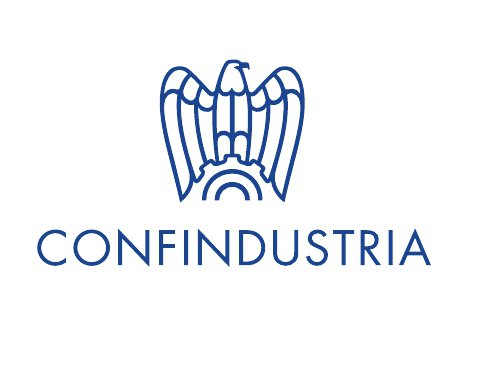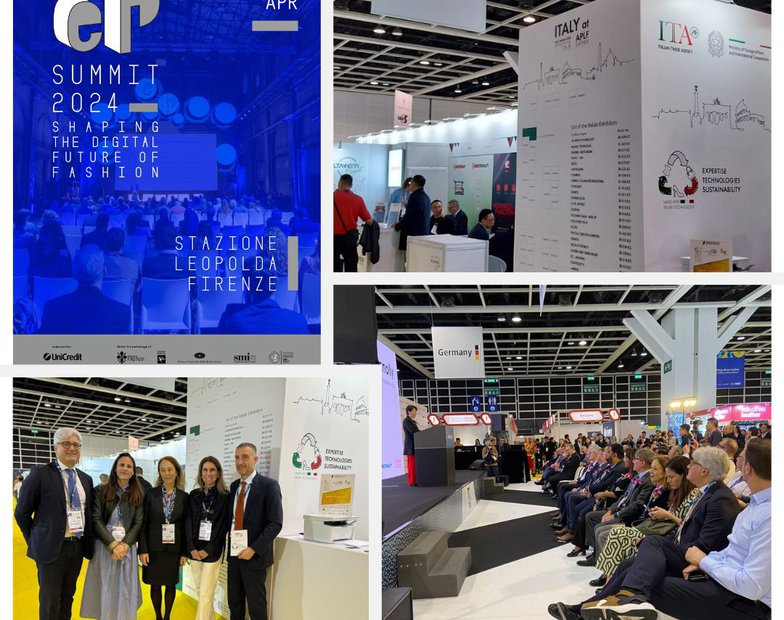The topic is about the ongoing and persistent issue of global supply chain disruption. EY recently released a supply chain disruption report based on market research, which surveyed global manufacturing supply chain executives regarding their current and future plans for addressing the ongoing disruptions to their supply chains. [EY podcast]
Podcast transcript:
Moderator
Here with us today to discuss the report and its findings is Claudio Knizek, EY Global Advanced Manufacturing and Mobility Consulting Leader. Claudio, thanks for joining us today to share your insights on the global supply chain challenges affecting all manufacturers across all industries.
Claudio
Thank you for having me.
Moderator
Let's get started. We have seen the steady stream of headlines over the last couple of years regarding the numerous supply chain issues that have impacted every industry sector globally. Can you give our audience some insights into what some of these basic underpinnings of the crisis are and why has it been so challenging for companies to address?
Claudio
Sure, I am happy to share a few thoughts on this important topic. Over the last 30 to 40 years, industrial companies have ridden the wave of globalization and established global supply chains with the overarching objective of reducing costs. In many ways, the strategy has worked. Global trade volume in 2021 exceeded US$22t — representing a tenfold increase over 1980. The expansion of global supply chains fueled this explosion, together with major geopolitical developments that open markets and sources of supply. Companies re-engineered their supply chains to add production sites and suppliers in a variety of lower-cost countries — particularly China and other countries in Southeast Asia.
However, these tactics proved extremely cost effective and efficient, but came with inevitable trade-offs. Added complexity and physical distance — combined with innovations, like just-in-time inventory management — left global supply chains more vulnerable to external disruptions. What we are seeing today is these vulnerabilities exposed, and negative impact cascading into manufacturing systems and markets around the world.
The traditional supply chain architecture used by many firms, which was built up over the last three to four decades, is being threatened by a confluence of external factors, large-scale global events, geopolitical issues, increasing protectionism and wage inflation in lower-cost countries.
Moderator
As mentioned in the opening, EY recently published a report available on ey.com based on the market survey of supply chain executives globally. What was the objective of the underlying study and what did you learn?
Claudio
Indeed. We have recently released this report titled, “Why industrial supply chains are decoupling” and this is available on ey.com. The report is based on the research work done as a part of the EY Industrial Supply Chain Survey, which surveyed across the industry’s set of supply chain executives in the US, Europe and China. The objective of the research was to get direct firsthand knowledge from supply chain executives from a variety of industrial sectors and regions, and gain insights into how companies are adjusting their supply chains — the top factors driving these changes and the expected cost impact of these changes.
Our research confirmed our belief that there is a major once-in-a-generation trend unfolding right before our eyes. Many industrial firms, driven by some of the factors that I mentioned earlier, are rolling back some of their traditional architectures and establishing new supply chain strategies. In fact, our research shows that a super majority of firms is already taking or planning a range of significant actions in response to today's highly challenging environment, including decoupling existing supply chains, and repositioning production facilities and suppliers closer to customers. This is a very, very significant finding.
The results of the EY Industrial Supply Chain Survey demonstrate the extent to which companies are already responding to these disruptions by transforming their global supply chains. Significant decoupling of existing supply chains is underway, with a whopping 53% of the respondents saying that they have already near or reshored some of their operations in the last 24 months and 44% saying that they are planning new or additional nearshoring activities in the next 24 months. To increase geographic diversity and reduce risk, 57% of the surveyed also said that they have established new — not relocated operations — in one or more additional countries in the last 24 months and 53% are planning to do so in the next 24 months.
Changes to supplier bases are even more prevalent. 62% of the respondents indicated that their companies have made significant changes in this area in the last 24 months and 55% say they are planning significant changes over the next two years. For these companies, increased diversification and proximity to their customers are key outcomes.
The shift away from single sourcing is evident. 77% of the respondents also said they are increasing their total number of suppliers and 63% plan on increasing the number of countries in which they have suppliers. Large percentages also said these changes shifted their supplier footprint closer to the operations and their customers.
These changes appear to trade lower costs for increased resiliency — at least for now. Nearly 60% of the respondents who have taken or are planning such actions expect short-term or long-term cost increases as a result. However, many are planning a range of offsetting actions, such as investments in robotics and automation to reduce labor costs, temporary or permanent price increases, and various other efficiency or cost-cutting measures.
Moderator
With the majority of these multinational companies already either taking action or planning action to their supply chains, are there regional differences in the approach companies are taking?
Claudio
Yes, definitely. Each major region we looked at — US, Europe and China — had strategies that in many ways reflected the unique conditions and circumstances of their markets. Industrial firms in North America, for example, have begun to bring production and suppliers closer to home to reduce complexity, and ease delays. This movement has been amplified by the US government’s support for domestic manufacturing and sourcing.
For example, several major US and foreign automakers have announced major investments in electric vehicle battery-manufacturing plants, while also working with US government’s policy assistance to domestically source more critical raw materials.
The EY survey shows this anecdotal evidence reflects broad trends. A majority of US respondents say they have near or reshored some of their operations in the last two years. Supplier base changes are even more prevalent, with 60% of the US respondents saying their companies have made significant changes in this area in the last 24 months.
In Europe, part of the pandemic supply chain transformation was generally less focused for industrial firms than in North America — both due to the absence of geopolitical tensions of the level of US-China, perhaps Brexit aside, and generally closer proximity to lower cost operations and suppliers in Eastern Europe and Asia. However, persistent pandemic-related issues and regulatory measures, like the EU's carbon border tax, have prompted European companies to increasingly reassess their supply chain architectures. The sudden and wide-ranging effects of the war in Ukraine will only reinforce this trend.
Still, the survey responses from companies based in Germany, France, Spain, Italy and the UK are generally in line with those from the US — with 55% of the respondents saying that they have engaged in near or reshoring in the last 24 months. European respondents were also likely to have made supplier base changes — with 61% saying they had done so in the last 24 months.
Moderator
What about China?
Claudio
I am glad you asked about that because one can simply not talk about supply chains without including China in the conversation. In our research, we saw several factors come into play with respect to that region.
The competitive industrial system, rapidly expanding domestic consumption, and the dual circulation strategy are driving greater independence and focus on internal markets in China. Elements of the 14th five-year plan, covering 2021 through 2025, are devoted to cultivating manufacturing clusters and key industries — for example, integrated circuits, aerospace, robotics, advanced power equipment, engineering machinery and others — to promote local economic development. The goods from these clusters would support the aim of greater internal circulation or domestic consumption, while also increasing what's called external circulation, via increased competitiveness in the global export market. So, you can see the same general trends we observed in the other regions also coming into play in China.
Perhaps, consistent with these governmental imperatives, Chinese firms’ responses to the EY survey indicate levels of operational and supply base reshaping in line with or greater than other regions. 65% of the Chinese respondents say that they have near or reshored operations in the last two years in some shape or form. 75% say that they have made significant supplier base changes over the same period.
With heightened geopolitical tensions and other disruptions, decoupling has increasingly surfaced as a trend to watch — particularly for foreign firms operating in China. For example, a US industrial manufacturer recently shuttered a 1,000-worker factory after 25 years of operation, with tariffs cited as the likely driver.
Similarly, a Japanese electronic components player announced a new production facility in Thailand to help diversify its supply chain away from China. However, given the size and growth profile of its market, the need to have a footprint in China for China precludes full decoupling by any company aspiring to compete against strong domestic players. Rather, more measured adjustments, like “China plus one” strategies, will be increasingly adopted to preserve foreign firms’ past investments and market access while also improving supply chain resilience.
Moderator
So, is the modern, efficient global supply chain obsolete?
Claudio
I would not necessarily call it obsolete. However, facing all the widespread disruption of today, industrial companies will have to reimagine their global supply chain architectures to be competitive tomorrow. I just do not see how the low-cost, rigid supply chains — that were built up in the 1980s and 1990s — will be successful over the coming decades. Reimagining and transforming supply chains can be costly — especially given how heavily some firms have invested in offshoring manufacturing and developing international supplier networks — but it is an essential step for companies to remain competitive.
Moderator
As these manufacturing executives reimagine their supply chains, what should they consider as key priorities for the new supply chain strategies?
Claudio
When transforming supply chains, I think industrial leaders should prepare themselves for expansive prospects and uncomfortable uncertainty.
Industrial leaders need to focus on five key priorities to remain competitive in my point of view:
- Rapidly redefine your supply chain strategy. Carefully assess your global product flows, tax models, network footprint, existing and even future geopolitical risks, and implement the supply chain architecture that can handle new risks and opportunities.
- Design and build agility into your supply chain footprint and supplier network. Improve your responsiveness through true real-time monitoring and scenario planning. Shift the mindset of your team and partners toward visibility and trust — versus command and control.
- Optimize your working-capital profile. Use supply chain reinvention as an opportunity to drive a step change in your working-capital profile by leveraging analytics and automation. Find ways to get more out of your working-capital investments.
- Embrace sustainability. While this is perhaps not as directly related to the topics we have been discussing, there's no question in my mind that supply chains will need to become more sustainable. Engage suppliers and partners to drive competitive advantage and environmental outcomes via circular economy principles. Link corporate responsibility to your organization's vision and purpose.
- Companies must move from “doing digital” to “being digital.” They should implement supply chain architectures that enable new revenue streams, rather than focusing solely on efficiencies. Close the talent gap in digital fluency and navigate the challenges of emerging digital taxes.
Moderator
Our survey and our analysis all point to this massive transformation that's underway. Yet in the meantime, things seem to be getting worse — not better — for manufacture and movement of goods. Where do you think we are in the process of this transformation, and when do you think we will begin to see tangible changes and results?
Claudio
This is indeed the start of a once-in-a-generation transformation. Like the globalization wave that preceded it, this supply chain decoupling will surely take several decades to unfold, and it will look different across regions and sectors. However, it is clear that this transformation has a potential to radically alter established supply chain models around the world. Given the massive impact of external forces affecting economies globally, manufacturers will need to come to terms with the fact that change is coming. An important thing for manufacturing clients to keep in mind is that this transformation will have winners and losers. So, getting it right now may be the only chance you will get.
Moderator
Claudio, thanks for joining us today and sharing your valuable insights with our audience. We look forward to having you back soon.
Claudio
Thank you for having me today. It was a pleasure.
Announcer
Thanks for listening to today's EY Advanced Manufacturing and Mobility Business Minute podcast. We hope you found it engaging and informative. To listen to other business minute podcasts, you can find them at ey.com/AMMpodcasts.



